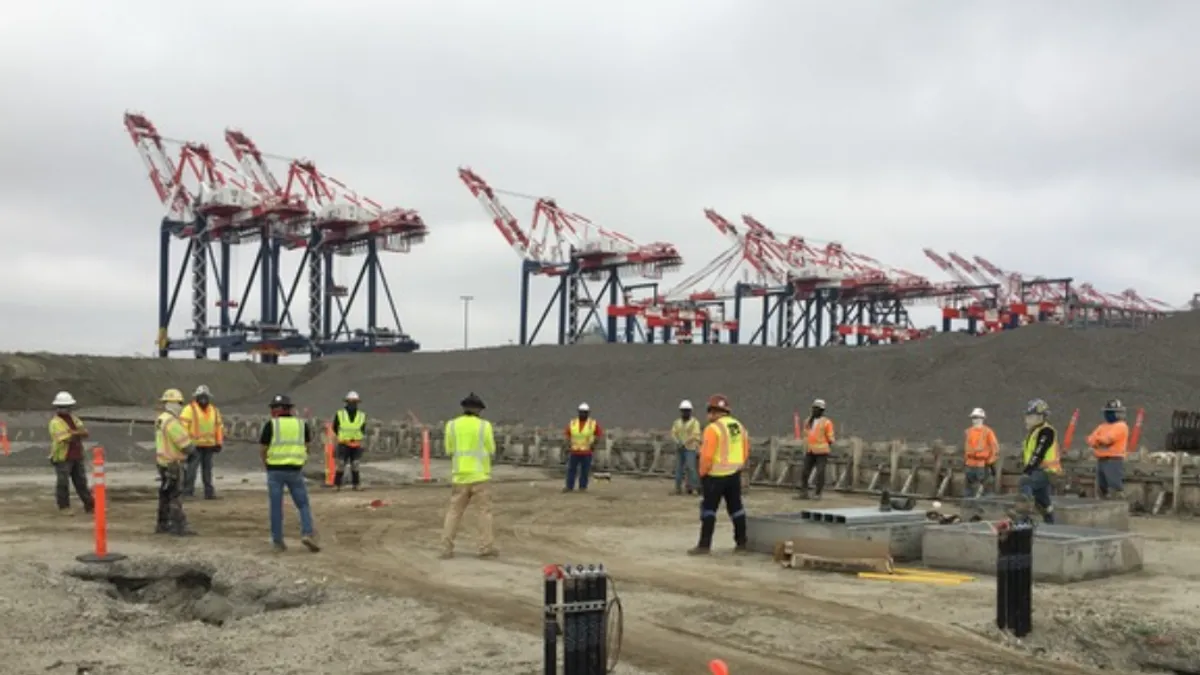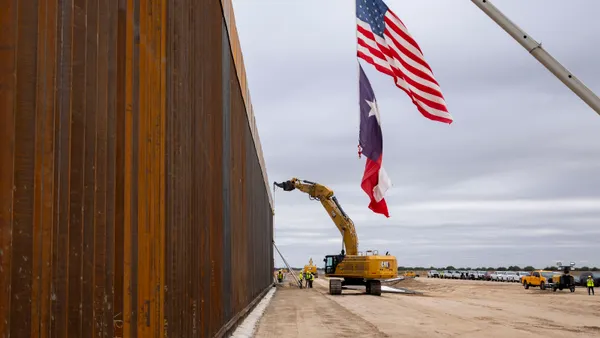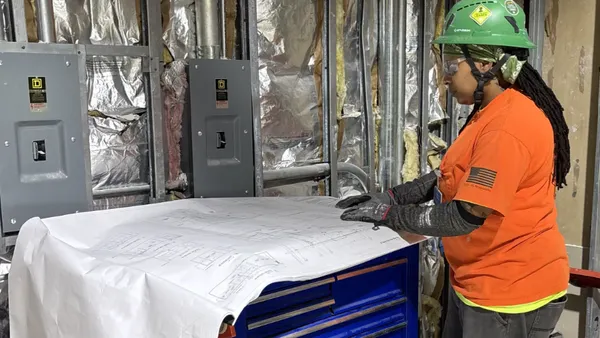Construction resumed Monday in six San Francisco Bay Area counties and the city of Berkeley, California, under new protocols for safety and worker distancing, but jobsites won't look quite the same as they did before the coronavirus outbreak hit.
The new guidelines are based on input from the Associated General Contractors of California covering social distancing, daily employee health assessments, jobsite signage, cleaning protocols and other precautions to mitigate the risks of the virus on construction sites.
Here, Construction Dive talks with AGC of California CEO Peter Tateishi about the reopening of work and how jobsites will look going forward.
CONSTRUCTION DIVE: What are some of the top new protocols being introduced?
PETER TATEISHI: We’re seeing a standardization of new protocol on jobsites, including the following.
- Field crews and jobsite administrative positions are placed into teams so that they only work in small groups, limiting potential exposure to full workforces on jobsites.
- Daily assessments and temperature checks are being implemented prior to entering a jobsite for the day.
- Carpooling is discouraged or eliminated; food trucks have been banned; and companies have set up outdoor areas for breaks and lunches that allow for proper social distancing protocols.
- Companies have increased mental health and wellness activities for employees who have been required to work from home.
How have construction sites changed since the pandemic began?
TATEISHI: Construction sites are taking on new life. Companies must work with owners to re-imagine “essential” onsite personnel, create shift teams on projects to limit exposure, and even structure the layout of the way work is performed in shifts differently.
We’ve seen the biggest transformation in the way the industry has embraced the use of technology. We are seeing owners across the state using updated electronic bidding platforms, virtual inspections and online permitting.
Throughout the pandemic, the construction industry has already started to embrace new technologies and systems, and we expect this to continue even after this is over.
How about construction offices, do they have a different environment as well?
TATEISHI: Both field offices and headquarters have been impacted. Before this crisis, the industry had shifted to more of a collaborate environment, housing all owner, design and construction teams for the same project within the same office with the goal of opening lines of communication to strengthen the team. However, with the social distancing requirements, that setting will need to be revisited in the future.
TATEISHI: Are contractors concerned about being able to meet the new guidelines?
The construction industry always has and always will keep safety the top priority. Like anything in business, it takes time and resources to ensure that all of the regulations are being met. However, our members who have been deemed essential from day one of these orders have been implementing the necessary safety guidelines to ensure the health and safety of their workforce.
These new guidelines are best practices and for the most part, are attainable. There are still some valid concerns around the availability of third-party “Jobsite Safety Accountability Supervisors,” but we continue to work with our members and local governments to ensure both compliance and challenges our industry faces with this new requirement.
It’s not always easy, but we know protecting the health of our crews and the public health is the number one priority.
Do you anticipate that they will add time and costs to projects?
TATEISHI: With additional personnel and regulations come additional costs. Our members have been able to hit critical path work on-schedule with project look-aheads and to anticipate workforce needs to reduce potential impacts.















